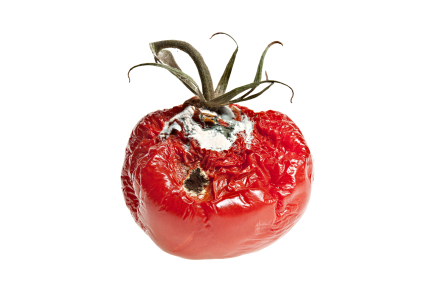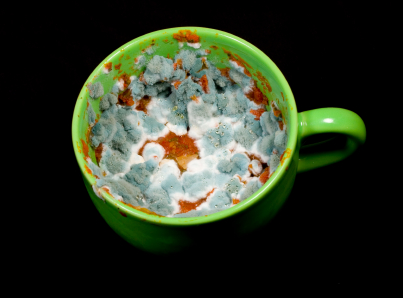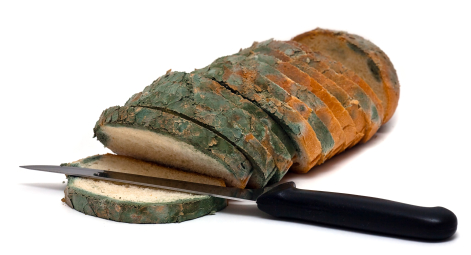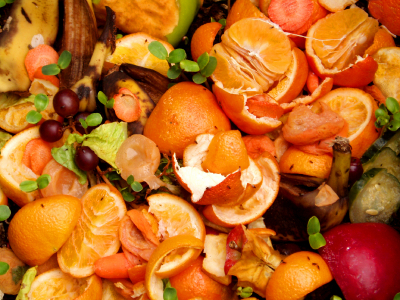Who hasn’t let lettuce languish at the bottom of the fridge until it resembles green slime? Anyone guilty of forgetting pantry items long past their expiration date?
American consumers are good at allowing food to go bad. Consider these staggering statistics, mostly gleaned from a recent expert panel on food waste at the Sustainable Foods Institute, a media conference held in conjunction with the Monterey Bay Aquarium’s Cooking for Solutions events:
- Almost 40 percent of the food grown and produced in the United States isn’t eaten.
- The typical household wastes one quarter of all perishable edibles that come into the kitchen.
- Every day the U.S. wastes enough food to fill the Rose Bowl, which seats 90,000.
- The U.S. is the number one waster of food in the world, yet 1 out of 6 in this country go hungry.
- The average American household allows $500 worth of produce to spoil a year and wastes around $2,200 worth of food annually.
- Some 97 percent of discarded food ends up in landfills, where it produces methane, a greenhouse gas about 25 times as potent as carbon dioxide.
Chew on those numbers for a minute. Then find ideas below from panelists like food waste expert Jonathan Bloom, author of American Wasteland, and celebrity chef Alex Guarnaschelli, who took part in “The Big Waste,” a Food Network show in which chefs prepared a feast for 100 using food destined for the trash.
- Buy Less: Shop more often and purchase just the food items you need. If frequent, smaller trips to the grocery store or farmers market aren’t an option, then plan meals and make a detailed shopping list to keep impulse and excess buying in check. Consumers need to get over the mind set, Broom cautions, of filling the fridge to the brim. And if you’re a weekly shopper, leave one or two nights open for repurposing leftovers.
- Rethink Portion Size: Most cooks want to feed family and friends well and err on the side of generous servings. But such thinking contributes to a phenomenon known as plate waste: Uneaten food headed straight for the compost bin or (worse) garbage pail. Instead, try small servings the first time around, and place seconds within easy reach on the table. Or serve food family style, where individuals can help themselves. As one conference participant pointed out, overeating is a form of food waste too and many eaters feel compelled by culture or conditioning to eat everything dished up for dinner.
- Love Leftovers: Pack that extra pasta and salad (keep dressing on the side to avoid gluggy greens) into containers for the next day’s work or school lunch. Or turn leftovers into an entirely new dish for a future dinner: Excess chicken can make its way into a rice bowl or pasta dish. A pot of beans can be transformed into a soup or stew. Stale bread, as Tamar Adler notes in her ode to sustainable cooking, An Everlasting Meal, can find a happy home in bread soup (pappa al pomodoro) or salad (panzanella).
- Make the Freezer a Friend: Lots of food items get a second chance thanks to the freezer. Extra stock, pasta sauce, or tomato paste can be stored in individual servings in an ice cube tray. Ripening fruit such as berries or bananas (peeled) can go from freezer to smoothies or baked goods. Bread and rice freeze well, as do nuts, which are less likely to go rancid in the cold. Most leftovers, stored in air-tight, clear containers, are good candidates for freezing for future use. (Label and date items to jog your memory regarding contents.)
- Learn Label Lingo: Expiration dates like “sell by,” “use by” and “best before” may indicate when a food item is at its optimal quality, says Bloom, but don’t necessarily equate to a ‘toss by” date. Your nose, eyes, and taste buds are often the best indication that something has gone off. This guide to expiration dates can also help you determine whether to dish up a food or ditch it in the compost.
- Embrace Imperfect Foods: Chef Guarnaschelli encouraged panel participants to “buy something imperfect today.” A gently bruised peach can go in a smoothie, an oddly-shaped egg can find a home in an omelette, a slightly soft avocado might wind up in a dip. “Imperfect doesn’t mean inedible,” adds Bloom, who advises cutting off bruises and blemishes on produce. Bonus: As anyone who has shopped the Berkeley Bowl seconds section knows, less than stellar looking fruits and veggies cost less too.
- Cook creatively: Conference panelist Rick Bayless, the chef-restaurateur, cookbook author, and television personality who has long focused on Mexican cuisine, says that Americans need to become a culture of cooks to prevent waste. Instead of giving cooking lessons, he notes, professional chefs should give anti-food waste lessons. “‘Food waste'” is a first-world problem,” adds Bayless, “in the rest of the world, what we think of as waste gets eaten.” A roast chicken, say, can form the basis of a dinner. Leftover meat goes in tacos, salads, or sandwiches. The carcass can make soup stock.
- Preserve Abundant Produce: Canning excess tomatoes, jamming extra apricots, pickling surplus green beans, are all ways of extending produce life and adding to a kitchen pantry, in households with the skills, time, and interest in taking on such projects.
- Compost with Care: Most landfills are packed with discarded food scraps that are unlikely to ever break down. But rotten food will biodegrade and can be recycled as compost. That said, Bloom encourages consumers to try to use food before composting it, since composting has a carbon footprint. “Composting is great,” he says, “but producing too much food, and then composting the excess to then grow more food is a broken approach.”
- Give Away Excess: Glean from your own garden (or kitchen) and find a food bank, homeless shelter, or food pantry who could put these edibles to use. It’s a win-win: You’ll feel good about feeding someone who is hungry and free yourself from guilt over food waste.
“The Big Waste” on the Food Network explores restaurant food waste — and turns it into a gourmet meal for a crowd.



